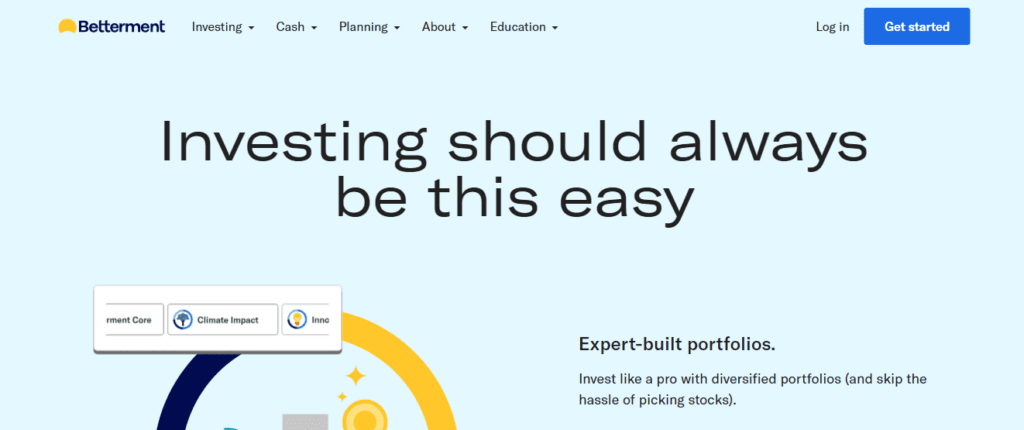

Table of Contents
Introduction
Investing in today’s fast-paced world, where time is a precious commodity, automating tasks has become essential for efficiency and productivity. This principle extends to investing as well. Automating your investing can streamline the process, ensuring you stay on track with your financial goals while minimizing the time and effort required. In this guide, we’ll delve into the strategies and tools you can utilize to automate your investing effectively, empowering you to take control of your financial future.
Understanding the Concept of Automated Investing
Before diving into the specifics, it’s crucial to grasp the concept of automated investing. Essentially, it involves using technology and predefined criteria to execute investment strategies without the need for constant manual intervention. This can range from setting up automatic transfers to your investment accounts to utilizing algorithmic trading systems.
For instance, let’s say you want to invest a portion of your paycheck into a diversified portfolio of exchange-traded funds (ETFs) every month. By setting up automatic transfers from your bank account to your investment account, you can ensure consistent contributions without having to remember to do it manually each time.
Creating a Personalized Investment Plan
The foundation of successful automated investing lies in creating a personalized investment plan tailored to your financial objectives, risk tolerance, and time horizon. This plan serves as a roadmap, guiding your investment decisions and ensuring alignment with your goals. Start by determining your investment goals. Are you saving for retirement, a down payment on a house, or your child’s education?
Next, assess your risk tolerance. Are you comfortable with the potential volatility of stocks, or do you prefer the stability of bonds? Finally, consider your time horizon – the longer your investment horizon, the more aggressive you can afford to be with your investment strategy. Let’s illustrate this with an example. Suppose you’re in your 30s and saving for retirement, which is still several decades away. Given your long time horizon, you might opt for a more aggressive investment approach, allocating a higher percentage of your portfolio to stocks for potentially higher returns.
Utilizing Robo-Advisors for Automated Portfolio Management
Robo-advisors have emerged as a popular tool for automating portfolio management. These online platforms use algorithms to create and manage diversified investment portfolios based on your financial goals and risk tolerance. They typically offer low fees compared to traditional financial advisors, making them an attractive option for many investors. Let’s say you decide to use a robo-advisor for automated investing. You would start by answering a series of questions about your investment objectives, risk tolerance, and time horizon.


Based on your responses, the robo-advisor algorithm constructs a portfolio consisting of a mix of asset classes such as stocks, bonds, and possibly other investment vehicles like REITs (Real Estate Investment Trusts). The robo-advisor then automatically rebalances your portfolio periodically to maintain the desired asset allocation, ensuring it stays aligned with your investment plan. This hands-off approach allows you to benefit from professional portfolio management without the need for active oversight.
Implementing Automatic Rebalancing and Dollar-Cost Averaging
Automatic rebalancing and dollar-cost averaging are two powerful techniques for automating your investing and optimizing long-term returns. Automatic rebalancing involves periodically adjusting your portfolio back to its original asset allocation. For example, if your target allocation is 70% stocks and 30% bonds, and due to market fluctuations, stocks outperform bonds, automatic rebalancing would involve selling some stocks and buying more bonds to restore the desired balance.


Dollar-cost averaging, on the other hand, entails investing a fixed amount of money at regular intervals, regardless of market conditions. This strategy helps smooth out market volatility by purchasing more shares when prices are low and fewer shares when prices are high, ultimately reducing the average cost per share over time.
Employing Dividend Reinvestment Plans (DRIPs) for Compounding Returns
Dividend Reinvestment Plans (DRIPs) allow investors to automatically reinvest dividends received from stocks or mutual funds back into additional shares of the same investment. This automated process harnesses the power of compounding, where reinvested dividends generate additional income, which, in turn, is reinvested to purchase more shares.
Over time, this compounding effect can significantly boost the growth of your investment portfolio without requiring any manual intervention. For example, let’s say you own shares of a dividend-paying stock through a DRIP. Instead of receiving cash dividends, those dividends are automatically used to purchase more shares of the same stock. Over the years, the number of shares you own increases, leading to higher dividend payments and potentially greater capital appreciation.
Setting Up Alerts and Notifications for Market Events
Staying informed about market developments and fluctuations is essential for making informed investment decisions. Setting up alerts and notifications through your brokerage platform or financial apps can help you stay on top of market events without constantly monitoring the markets yourself. You can configure alerts for various criteria, such as price movements of specific stocks or ETFs, changes in market indices, or news related to industries or companies in your investment portfolio.
These alerts can serve as triggers for taking action, whether it’s adjusting your portfolio allocation, capitalizing on investment opportunities, or simply staying updated on market trends. For instance, you might set up an alert to notify you if a particular stock in your portfolio experiences a significant price drop, prompting you to reassess its fundamentals and decide whether to buy, sell, or hold based on your investment strategy.
Conclusion
Automating your investing can significantly simplify the wealth-building process, allowing you to stay focused on your life while your money works for you in the background. Whether you choose to leverage robo-advisors, automatic transfers, or a combination of strategies, the key is to align your automated investing approach with your financial goals and risk tolerance.
What are your thoughts on automating your investing? Have you tried any of the strategies mentioned in this guide? Feel free to share your experiences and insights in the comments below!



